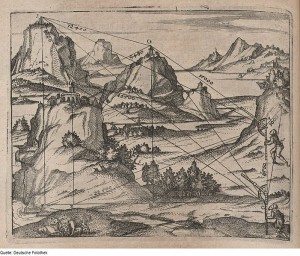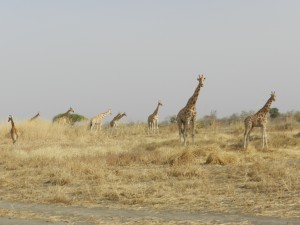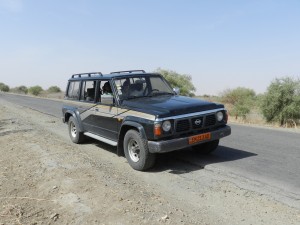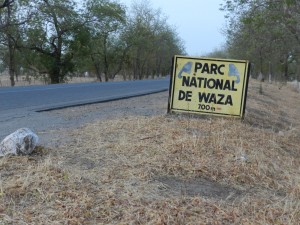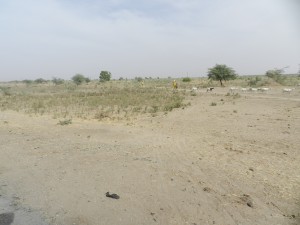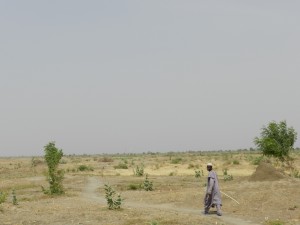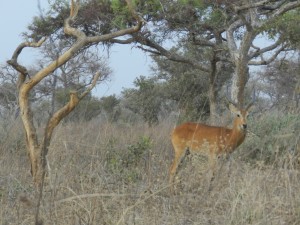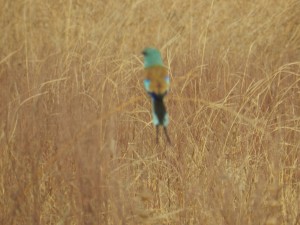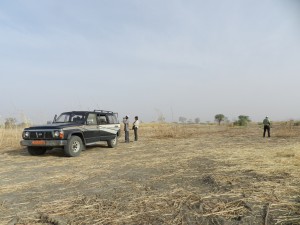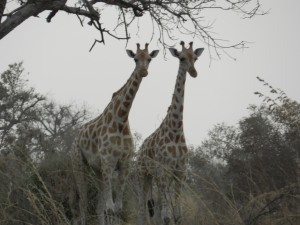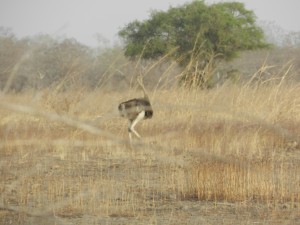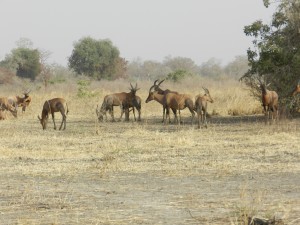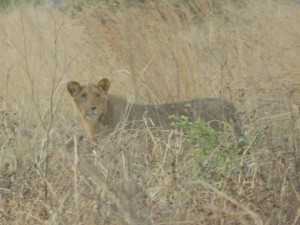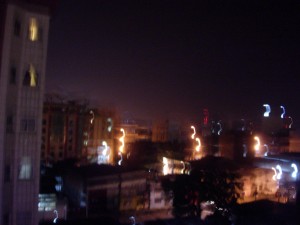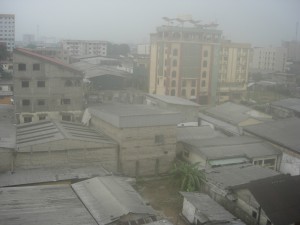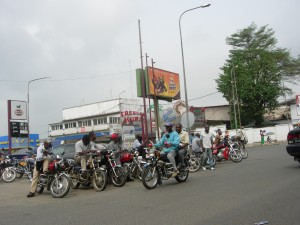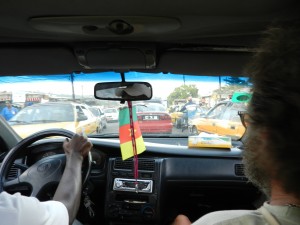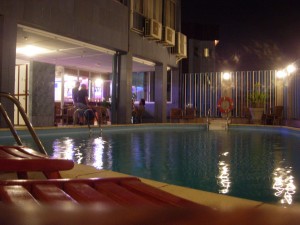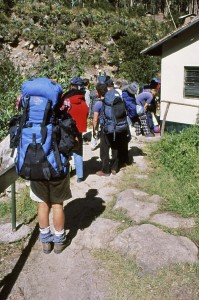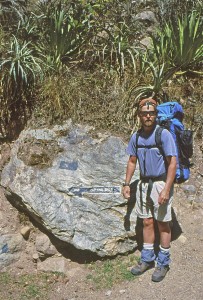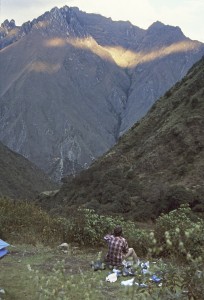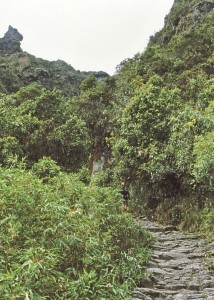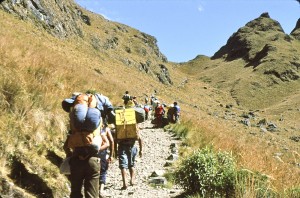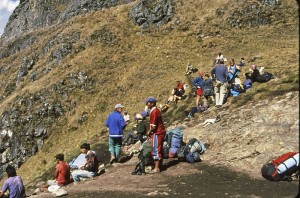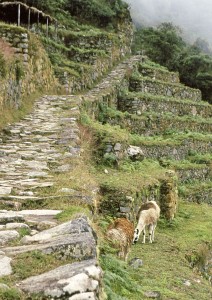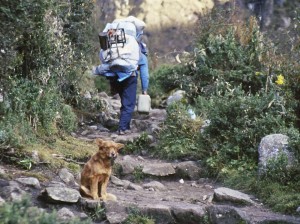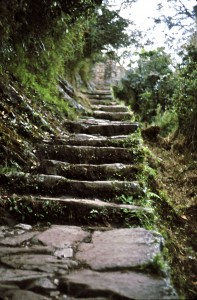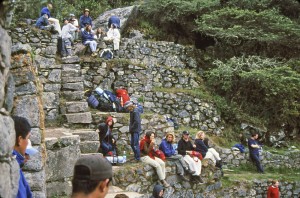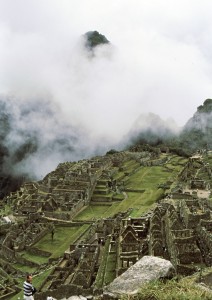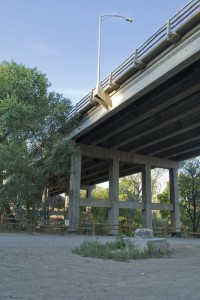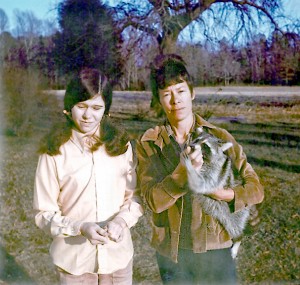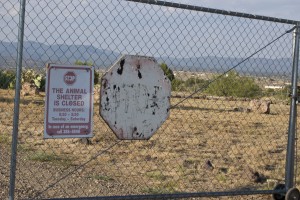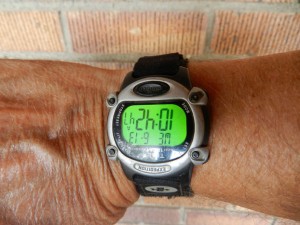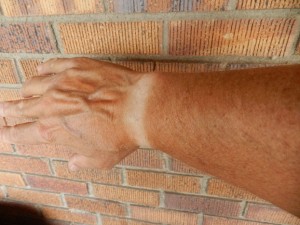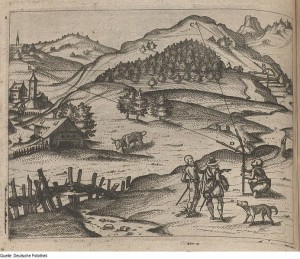 Eyeball a map of New Mexico’s massive Gila National Forest and, off to the southwest of the Gila’s main body, you will see a detached section of green. At the heart of this detached swath of forest lie the Burro Mountains, which consist of three side-by-side 8,000-foot summits that, in loftier realms would be considered modest at best. Hereabouts in Gila Country, they are the mountains of home, a range visible from many miles away as you’re driving up from Tucson or the remote vastness of the Bootheel.
Eyeball a map of New Mexico’s massive Gila National Forest and, off to the southwest of the Gila’s main body, you will see a detached section of green. At the heart of this detached swath of forest lie the Burro Mountains, which consist of three side-by-side 8,000-foot summits that, in loftier realms would be considered modest at best. Hereabouts in Gila Country, they are the mountains of home, a range visible from many miles away as you’re driving up from Tucson or the remote vastness of the Bootheel.
Through the Burro Mountains passes a section of the 3,100-mile-long Continental Divide National Scenic Trail as it winds it way between the Mexican and Canadian borders. The CDNST has since its legal establishment in 1978 consisted in these parts of a mismatched hodgepodge of single-track segments interspersed with rutted jeep tracks, washboardy dirt roads and even long segments of paved highway.
The powers that be at the Gila National Forest have never been, and will never be, inclined toward promoting the outdoor recreational opportunities offered up in spades within the Gila’s 3.3 million acres. Those powers that be have ever been, and ever will be, more focused on the needs and wants of the various extractive industries, mostly those centered upon bovines. Frustrating as this operational reality can be for those of us disinclined to interface with denuded, erosion-prone riparian zones, for many people who have grown tired of the cancer-like growth of the outdoor recreation industry that defines so many otherwise attractive places in the West, this lack of focus on trails and trail maintenance and the aggressive promotion of such is an acceptable trade-off. While we may have to slalom our way through endless piles of stinking, fly-infested cow caca, we rarely have to slalom our way through hordes of mountain bikers and gaggles of peak-baggers so focused upon their pursuits that they are unable to see the forest for the trees.
The Burro Mountains historically have been trail free. And I mean that in the absolute sense. For most of the time I have called this neck of the woods home, there was nary a millimeter of true trail through the Burros. There are vestiges of old logging roads and informal stock driveways, historic remnants of the mining activity that forever defined this mineral-rich area, and serving the transportation needs of the ranchers whose livestock still roam throughout the dry washes and cactus-covered ridgelines that form the bulk of the Burros.
Then came the CDNST, or, better stated, then came the administrative edict from the U.S. Forest Service’s higher-ups in D.C., encouraged by the powerful National Forest Foundation, to the various national forests through which the Continental Divide passes to get with the high-profile CDNST program. Thus, the first tentative tracks of the CDNST began to appear in the Burro Mountains. And, thus, the Burro Mountains, long the exclusive domain of ranchers, miners, ATV riders, gun nuts and sundry variations on the bubba theme, started seeing dayhikers, backpackers and, yes, sadly and inevitably, even mountain bikers.
The main section of the CDNST through the Burros followed a toponymically captivating geographic feature named Deadman Canyon, a heavily forested ravine that passes close to Mud Spring, the first natural water source on the entire CDNST if you’re traveling north from the Mexican border, some 10 arid hiking days away. (And, if you’re traveling south, well, Mud Spring is it; from hereon in, you’ll be slaking your thirst at stock tanks.) The CDNST route up Deadman Canyon — one of my favorite hikes — ascends to the 8,035-foot summit of Burro Peak, from where you can observe the heart of the Gila to the north and the magical bleakness of the Chihuahua Desert all the way south into Old Mexico.
Deadman Canyon Trail, despite being part and parcel of the CDNST, has never been heavily maintained. Nor has it ever been heavily traveled. Verily, though I have tromped upon it dozens and dozens of times, never once have I encountered another person, though I have seen plenty of boot prints and, more and more, mountain bike tracks.
Two years ago, as part of a permanent re-route of the CDNST being slowly and methodically (and, I should state, very tastefully) established to bypass the aforementioned sections of rutted jeep tracks, washboardy dirt roads and even long segments of paved highway, the Deadman Canyon section of single-track trail was essentially decommissioned; it is no longer a part of the CDNST. Thus, it is a section of trail in administrative limbo; whatever resources were allocated to maintain it while it was part of the national scenic trail system have been siphoned off to maintain the newly built, permanent sections of the CDNST. Slowly but surely, the Deadman Canyon Trail will whither away, till it likely has its official system status removed entirely.
And, to that I say: Hooray!
Though I suspect I still bushwhack off trail more than most of my back-toting brethren, I am now at an age where I find myself tromping upon tread far more than I used to. This chagrins my increasingly aged and infirmed self to no end, but, well, grim temporal reality, and the impact that reality has had on one’s physiology, is tough to ignore, especially for a person who does most of his hiking not only by his lonesome but in impromptu fashion (read: I do not often inform a responsible party of my itinerary, at least partially because I am not acquainted with many responsible parties, but mainly because, on those rare instances when I actually have an itinerary, I usually don’t know what it is still I’m on the trail and, even then, it’s almost always subject to real-time improvisation). If you are disposed to bushwhack, but are being visited more often than you used to be by Good Sense, the next-best option is unmaintained trail, which basically offers up the best of both backcountry worlds. While the Deadman Canyon Trail is not yet officially unmaintained, it essentially is, and soon will be.
I went up there with my dog, Casey, a few weeks ago, with the intent of hiking the two miles up to the new CDNST intersection, right below Mud Spring. My eye was caught and my heart sank almost immediately, for tied to trees and bushes and the occasional barbed-wire fence post were strips of lime-green surveyors’ flagging. As we all know, few are the times when surveyors’ flagging arrives on any scene — urban, rural or backcountry — when the result is anything save negative.
This I know more than most, having worked for three different land surveyors in three different states — Virginia, Illinois and New Mexico — during my formative years. Matter of fact, at one time, I seriously considered pursuing surveying as a life-long vocation and likely would have done so were it not for the unavoidable and unfortunate fact that I am essentially numerically illiterate, and, without finely honed math skills, one’s land-surveying advancement opportunities are limited. Still, it was tempting. Out in the woods all day, following in the footsteps of George Washington, Thomas Jefferson and many other historic luminaries. Especially during my surveying stint in Virginia, I would often find myself in a red-bricked pre-Revolutionary-War courthouse building searching through parchment documents with words upon them writ in flowery cursive script, telling me that the boundary marker I needed to find was hacked into a sweet gum stump … more than 200 years ago.
It was not just a decided lack of math skills, however, that ultimately waylaid my budding land-surveying career before it ever really got off the ground. The company I worked for in Virginia specialized in carving large farms into subdivisions. Farms that had been owned by the same families for generations were suddenly being hacked into developments with ironic names like Foxhunt Terrace, interlaced by ersatz streets with names like Wildlife Way.
It did not assuage my reaction to spending my days helping the process of eviscerating both the heritage and the ecology of my home county knowing that one of the biggest reasons this process was transpiring was because property taxes were rising in a seeming premeditated fashion so exponentially that many old families had no choice but to sell their acreage. I saw many an old farmer, who had lived his whole life upon the ground where I was working with my cohorts in surveying crime, break down into blubbering convulsions as ancient trees were felled and orchards bulldozed.
Even though I understood full well that many of those farms were, back in the murkiness of history, stolen from local Powhatan Indians and worked with slave labor, it still hurt to see them replaced with the kind of tasteless cookie-cutter commercialism that now defines America.
There was no way to stave the inevitable, and, if I had resigned my position in righteous indignation, someone else would have quickly and gladly stepped in to replace me. But I was not totally impotent; I had the ability to at least serve as a thorn in the side of the development of which I myself was part. Several of my like-minded compadres and I would often sneak back onto the very farms I was helping to slice up late at night, usually on weekends, and usually after having ingested copious amounts of various chemical courage-inducers, with destructive malice in our hearts.
Though I had lived in New Mexico for two years when I returned to my native turf in the Old Dominion for the requisite year back home before casting one’s lot with the West forevermore (yes, there was a woman involved, one who proved both her intelligence and perceptive nature by unceremoniously dumping my ass), I can not remember whether I had at that time read any Edward Abbey. I seriously don’t believe I had, but I might have. Therefore I cannot claim original thinking when it came to my eventual reaction to land surveying, or, more accurately stated, my reaction to the effects of land surveying.
Years later, when I indeed interfaced with Abbey and his self-congratulatory rantings regarding land surveying, where he boasted lamely about removing surveyors’ stakes, I remember thinking how much of a fucking amateur he was. The process of simply removing the more obvious evidence left behind by land surveyors, while certainly causing inconvenience, is nothing more than a pain in the ass that is generally pretty easily discovered and rectified by simply recreating, via the various control hubs located throughout any project being surveyed, that which was removed by recreational monkey-wrenchers. Matter of fact, a large part of the strategy involved with any large-scale surveying project is building in means by which disturbed markers can easily be relocated.
The true skill in fucking up a land-surveying project comes from being able to locate those control stations, the points from which all other parts of the project are measured, the points from which projects are made relative to the rest of the surveyed world. Had Abbey done his homework, he would have known that, if you want to fuck with the efforts of land surveyors and, by extension, the projects they are working on, very un-Abbey-esque subtlety is the best path.
You need to have an eye for the mechanics of a project to locate the control stations. The company I worked for in Colonial Virginia used 2×2 wooden stakes with a flooring tack nailed into the top. The entire project was measured from not just that tack, but the very center of that tack. In most larger surveying projects, you’re measuring to one-one-hundredth of a foot. In construction surveying, that becomes one-one-thousandth. It does not take much of a tweak of a control hub to cause exponential increases in mis-measurement throughout a project. Matter of fact, if you move a control stake too far, the fact that it has been tampered with will be obvious to the instrument operator next time he or she sets the theodolite up. Move a control hub a mere inch and you can wreak havoc upon a project, making it so property lines are established incorrectly. If you manage to find more than one control station, your efforts at land preservation can translate down the development road to having buildings constructed with property lines running through the middle of them. You can make it so people’s lives are impacted by litigation for years, maybe even decades, to come.
For most of the year I worked land surveying on Colonial Virginia, it was not uncommon for me and several of my co-employees to visit by night the very sites we worked on by day. I knew full well that there were don’t-bite-the-hand-that-feeds-you-type moral implications at play during our nocturnal efforts to set wrongs aright, even if only temporarily. But, as far as I was concerned, those moral implications were clearly mitigated by the fact that the hand that then fed me fed me to the tune of literally $3 an hour. That hand also demanded considerable overtime work on weekends, and steadfastly refused to pay time-and-a-half. So, basically, well, fuck him and the horse he rode in on.
Though I knew I would be long gone before the eventual ramifications of our modest efforts reached fruition — if indeed they ever would — I used to lie in bed in my shithole trailer, smirking at the thought of civil court cases raging for generations because of the well-intentioned efforts of a handful of stoned reprobates. I realized at that point how much fun it was to fuck with The Man for no reason more intellectually complex than the sheer joy of fucking with The Man.
Still, the rampant development of an area that had been hyper-rural throughout its long and storied history — this being the county where Pocahantas was born, this being the county where George Washington quartered his troops before the Battle of Yorktown, this being the heart of the bloody Peninsula Campaign in the Civil War — continued pretty much unabated. The bulldozers always arrived on schedule, plowing down verdant semi-tropical hardwood forests for which, when push came to shove, I had very little in the way of emotional attachment. That part of the country was simply not My Place.
 The Gila National Forest of southwest New Mexico, where I first arrived sight unseen in July 1976 — even as the tall ships were descending upon the east coast in full Bicentennial fervor — on the other hand is My Place. Always has been, even before I was born, and always will be, even after I am long gone.
The Gila National Forest of southwest New Mexico, where I first arrived sight unseen in July 1976 — even as the tall ships were descending upon the east coast in full Bicentennial fervor — on the other hand is My Place. Always has been, even before I was born, and always will be, even after I am long gone.
During an especially lean fiscal time, I became employed by a land surveyor in Gila Country, part-time in the late-’70s. By this time, I know for a fact I had read several of Abbey’s books, and I’m sure his observations about recreational surveyors’ stake removal had been processed through my rudimentary mental philosophical filters. But I never once even pondered the notion of reprising my Colonial Virginia nocturnal shenanigans. For one thing, the man I worked for was one of the truly great people it has ever been my pleasure to associate with professionally. For another, we worked mainly in the unpeopled Mimbres Valley, where, to my still-wet-behind-the-ears eyes, there was absolutely no chance whatsoever of bulldozers plowing the juniper and piñon forests under. Well, I was wrong about that, as the Mimbres Valley — the very area I helped survey — is now home to endless vistas filled with the tackiest low-level platted half-acre-lot, manufactured housing subdivisions imaginable.
Shit!
I have not worked in the land-surveying profession for more than 30 years now. For a while, I would occasionally stop to move or remove sakes or property markers that had spouted in places where they ought not have, but, like most of my youthful fancies, those efforts trickled away as my life moved inexorably closer to a mainstream that at this point pretty much defines it.
What has definitely not trickled away has been my ability to notice surveyors’ flagging and to wince accordingly.
The flagging up Deadman Canyon began at the trailhead and continued at regular intervals along the trail as it made it way up toward Mud Spring, the CDNST intersection and, eventually, the summit of Burro Peak. The flagging was not fresh, but neither was it stale. It had not yet become brittle, but its color had started to fade a bit. I estimated that it had been placed along the trail a few months prior, meaning mid-winter.
I could not for the life of me ascertain its function.
Though the flagging followed the trail exactly, I doubt it was placed to delineate the trail’s route, as it is still very obvious, despite the fact that its status, like I said earlier, had been downgraded.
I briefly considered that the flagging was placed at spots where someone — perhaps a Forest Service trail crew employee — wanted GPS coordinates taken so the trail could be entered into a database. But the flagging’s placement did not support that theory.
Had a Forest Service trail crew come through to mark the trail corridor for a future re-design, there would have been sections that ventured from the more poorly designed sections of the existing tread. There were none of those.
Besides, most Forest Service trail crews work in the summer, not the dead of winter.
Perhaps a local senior citizen hiking group had planned a trek upon this section of trail and, to ensure that those members of the group who did not possess enough in the way of backcountry navigation skills to stay upon obvious tread and/or to stay with the group, some well-meaning person had placed copious quantities of surveyors’ flagging along the route, like bright-green breadcrumbs. Perhaps that person did not get around to coming back to retrieve the flagging. Or maybe someone else was supposed to do just that and he or she forgot, or thought someone else was supposed to do it.
Then it dawned on me that, possibly, the Deadman Canyon Trail was not being downgraded at all. Possibly, this flagging was indicative of a decision to actually upgrade it, to make it more easily passable for senior citizen hiking groups and mountain bikers. Perhaps the plan was to brush it out, to widen it, to add more signage.
Yikes!
No matter its genesis, I looked upon the flagging adorning the Deadman Canyon Trail as nothing more than litter. And I hate litter. So I started pulling it off every tree, every bush, every barbed-wire fencepost upon which it fluttered in the springtime wind.
I thought that, maybe, as a result of my efforts, some Forest Service person was going to have to come back in to re-flag the trail. But, I figured, if that’s the worst thing that happens to that Forest Service employee, his or her life ain’t half bad.
Then I thought that perhaps my de-flagging marathon might result in some hapless senior citizen getting directionally discombobulated. Maybe that person — someone’s kindly grandfather — would die an agonizing death alone in the woods as a result. But, I figured that, well, if you need flagging to stay on course in the woods, you ought not venture out of town. And, if you get lost, you have the opportunity to learn many lessons not available to those who remain found.
Soon, both pockets began to bulge with flagging. I had to start transferring the large wads of removed surveyors’ flagging into my daypack, while, likewise, soon began to bulge. There was a lot of flagging.
At one point, the Deadman Canyon Trail leaves the canyon proper and ascends steeply up a hillside. It re-connects with the canyon about a half-mile farther up. Trails are often designed thus in the Southwest to bypass box canyons, places that are often too rocky or precipitous to safely traverse. I had always wanted to venture up that section of canyon bypassed by the trail, and this seemed as good a time as any. I could see that the flagging was still lining the trail as it went up the hill. I figured, if I were indeed able to successfully negotiate the canyon bottom up to the point where it reconnected with the trail, I’d be able to collect the flagging on the way back down. And, if there was some sort of impassable obstacle, I would simply turn around and proceed up the hill on the trail — meaning I would collect the flagging then. And, if what I found on my bushwhack up the canyon was the cause of its ominous appellation then, somewhere in the future, someone — maybe a hunter or a rancher — would stumble upon a corpse whose pockets were inexplicably filled with surveyors’ flagging.
No sooner had I left the trail and started making my way up the trail-less canyon bottom than I spied, of all disheartening things, bright green surveyors’ flagging lining a route that ended up being easily passable. This made no sense and countered whatever innocent explanations I had mentally conjured earlier about the origins of this goddamned flagging epidemic. Some cocksucker was clearly up to no good! Maybe this flagging had nothing whatsoever to do with the trail itself. Maybe its proximity to the trail was mere coincidence. Maybe there was a logging operation in the planning stages.
Shit!
I removed every single strip of flagging between the CDNST junction and the Deadman Canyon Trailhead. It ended up filling to brimming one of those kinds of plastic grocery bags that are now being categorically dissed by people trying to save the world.
I will likely never know who placed that flagging along Deadman Canyon. Or why. Until and unless, that is, I show up one day, ready to hike to Mud Spring or Burro Peak, only to discover chainsaws or bulldozers or some other manifestation of the forces of development evil. Maybe I will then overhear a worker castigating the motherfucker who removed the flagging that was placed to orient their destructive activities.
 We all eventually reach an age when we realize, to steal a line from “V for Vendetta,” that almost every change you have seen in your life is for the worse. You find yourself indoctrinated by the concept of the inevitable. You find yourself spending more time trying to figure out how to dodge the inevitable rather than trying to figure out how to confront it. You find yourself replaying the parable of the little Dutch boy putting his finger in the leaking dyke. You find yourself thinking that bulldozers are the fated norm.
We all eventually reach an age when we realize, to steal a line from “V for Vendetta,” that almost every change you have seen in your life is for the worse. You find yourself indoctrinated by the concept of the inevitable. You find yourself spending more time trying to figure out how to dodge the inevitable rather than trying to figure out how to confront it. You find yourself replaying the parable of the little Dutch boy putting his finger in the leaking dyke. You find yourself thinking that bulldozers are the fated norm.
You go to meetings. You write letters to the editor. You sign petitions. You send money to MoveOn.org. You subscribe to Mother Jones. You re-read Edward Abbey. You shake your skinny fist at the darkening sky. You campaign for the least-fucked-up asshole on the ballot, only to learn that he or she is 10 times more fucked up than you ever thought possible. And still trees get mowed down. And tacky cookie-cutter subdivisions fill places like the Mimbres Valley. And pristine swaths of desert get plowed under to make room for massive solar arrays so we can have our cake and eat it too. And the rainforest gets plowed under to make room for “sustainable” sugarcane plantations so we can continue to smugly drive our goddamned cars to the goddamned trailhead. And you are told over and over that you can’t stop progress. And you get labeled a rebel or a malcontent or an idealist or an eco-terrorist (all of which are compliments in my book) or, worst, naïve if you respond that destruction is not progress and that, yes, fuck you, we can stop it. But you know that, in order to stop that which the agents of destruction call progress, you might have to condone monstrous acts, and maybe even become a monster yourself. And you sometimes get to thinking as you’re hiking alone out in the quiet woods that maybe the only hope left for the world is a total collapse of civilization. But then you think, fuck, as my wife says, in most ways, that would be a flat-out pain in the ass. You realize you have neither the stones nor the energy to go down that path. You realize you have neither the stones nor the energy to burn shit down and to blow shit up and to maybe even take a life in the name of a greater good that most of us could not define if our lives depend on it. You realize you no longer have the courage of your convictions. Maybe you never did. Probably you never did.
So, you’re left with the flaccid act of removing surveyors’ flagging from the side of a trail hardly anyone ever visits. Not out of hope, but out of a frustration that now defines your life clear down to its mortal core.

